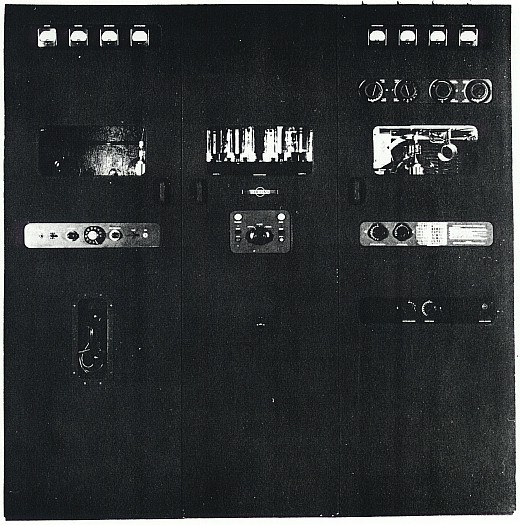| GENERAL DESCRIPTION |
 EQUIPMENT
EQUIPMENT| Condition | Power Input |
| CW - Standby | 1840 watts |
| VOICE & MCW - Standby | 3160 watts |
| CW - Key Closed | 6480 watts |
| MCW - Key Closed | 7240 watts |
| VOICE - 100 Modulation | 9920 watts |
| TUBE COMPLEMENT | |||||
| RF stages | AF stages and modulator | Rectifiers | |||
| Number | Type | Number | Type | Number | Type |
| 1 | 811 | 2 | 450TL | 4 | 866/866A |
| 2 | 750TL | 2 | 845 | 6 | 4B32 |
| 2 | 4-125A | 2 | 801 | ||
| 1 | 807 | 1 | 6X5GT | ||
| 1 | 837 | 1 | 6SN7GT | ||
| 1 | 6SJ7 | 1 | 6SJ7 | ||
| 1 | 6X5GT | 2 | 6C8G | ||
| 1 | 6SL7GT | ||||
| THIS TYPE OF TRANSMITTER IS INSTALLED IN THE FOLLOWING COUNTRIES | |||||
| ITU | Country | ITU | Country | ||
| D | GERMANY | INS | INDONESIA | ||
| MRC | MOROCCO | POR | PORTUGAL | ||
| SEY | SEYCHELLES | USA | USA | ||